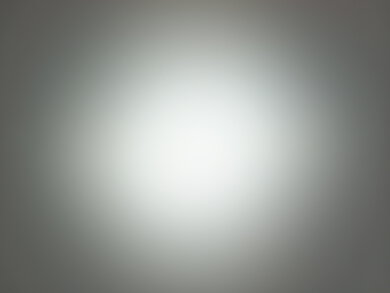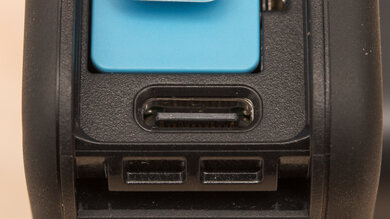The GoPro HERO9 Black is the 2020 flagship action camera from GoPro. In many ways, the HERO9 set the standard for GoPro cameras to come. It's the first GoPro to feature a front-facing display for selfies and vlogs, as well as the first GoPro to record 5k video. But it handles the basics well, too, with a robust waterproof build and a highly effective digital stabilization feature.
Our Verdict
The GoPro HERO 9 can come in handy for snapshots while traveling, but it isn't the camera to use for high-quality photography. It's mostly limited by its fixed aperture, fixed focal length lens, and its small sensor, which doesn't perform well in low light. On the upside, it's incredibly portable and easy to bring on any travel adventures you might have, including underwater.
- Rugged, portable design.
- Waterproof.
- Not meant to be used handheld.
- Fixed lens is very limiting.
The GoPro HERO 9 isn't intended for landscape photography but is suitable for snapshots of landscapes or vistas while adventuring.
The GoPro HERO 9 isn't meant for sports and wildlife photography. Though it can fire off quick, albeit short, bursts of photos, it's limited by its fixed focal length and fixed aperture lens, which isn't suitable for far-away subjects.
The GoPro HERO9 can shoot photos in RAW format, but we don't test action cameras for RAW image quality.
The GoPro HERO 9 is satisfactory for vlogging. Its portable design makes it easy to bring with you on the go, and it even has a front-facing selfie screen that lets you see yourself while recording. It also has a highly effective stabilization feature to smooth out camera shake. That said, it doesn't have the best video quality relative to larger-sensor cameras, and its fixed aperture and fixed focal length lens isn't very versatile.
- Rugged, portable design.
- Impressive video stabilization performance.
- Poor video quality in low light.
- Fixed lens is very limiting.
The GoPro HERO 9 isn't good for studio video. It isn't designed for video work in a studio setting, with a fixed focal length and fixed aperture lens that limits what kind of video you can shoot. If anything, it can be a good tool to capture B-roll footage, depending on your particular needs, but this isn't the camera to get for cinematic or studio footage.
- Rugged, portable design.
- Poor video quality in low light.
- No inputs for headphones or a microphone.
- Fixed lens is very limiting.
The GoPro HERO 9 is amazing for action video. You can easily mount it to action cam mounts and objects like helmets or cars, and it's waterproof down to 33 ft. It also has an impressive digital video stabilization feature that helps smooth out camera shake, along with a horizon leveling feature. Plus, it has a wide range of frame rate and resolution options, including 5k video recording at up to 30 fps, 4k video at up to 60 fps, and 1080p at up to 240 fps. That said, its small sensor isn't well-suited to low-light environments.
- Rugged, portable design.
- Impressive video stabilization performance.
- Lots of frame rate options in FHD.
- Waterproof.
- Poor video quality in low light.
Changelog
- Updated Jan 29, 2024: Added text to the 'Raw Photo Performance' verdict box.
- Updated Jan 29, 2024: Converted to Test Bench 0.12.1.
- Updated Jul 26, 2023: Added full text to review and rewrote existing text for clarity.
- Updated Dec 21, 2022: Converted to Test Bench 0.12.
Check Price
Differences Between Sizes And Variants
The GoPro HERO 9 is only available in black, and you can see our unit's label here.
Let us know if you come across another variant, and we'll update our review.
Popular Camera Comparisons
The GoPro HERO 9 Black is a very capable action camera. While it doesn't have as many frame rate and resolution options as newer GoPros, it's still a powerhouse camera for sports and action video, with 5k video recording, best-in-class stabilization, and a selfie screen to help you monitor yourself while recording.
For more options, check out the best video cameras for sports or the best YouTube cameras.
The GoPro HERO9 Black is better overall than the GoPro HERO8 Black. It offers some upgrades, including 5k video capability and a selfie screen that lets you monitor yourself while recording. That said, the HERO8 is still a great action camera and features the same sturdy build quality and waterproofing that's typical for GoPro cameras.
The GoPro HERO9 Black is a bit better than the DJI Osmo Action. Though both are extremely portable and waterproof with front-facing screens, the GoPro offers more resolution and frame rate options, including 5k video up to 30 fps. The GoPro has a better stabilization feature, delivers better overall video quality, and also has more field-of-view options.
The GoPro HERO9 Black is better overall than the DJI Action 2. While the DJI has a more portable, modular design, the GoPro has a better battery life and doesn't suffer from major overheating issues as the DJI does. It also supports 5k video recording at up to 30 fps, but unlike the DJI, it can't record 4k at 120 fps.
The GoPro HERO10 Black offers a few improvements over the GoPro HERO9 Black, including a new processor, which gives it improved low-light performance, as well as offering more frame rate options. Otherwise, they're both excellent action cameras with near-identical builds and front-facing selfie screens.
Test Results

The GoPro HERO9 Black is a highly portable camera. It's marginally larger and heavier than older GoPro models like the GoPro HERO8 Black, but all in all, still an ultracompact camera that you can mount to almost anything.
This camera isn't meant to be used handheld, so it doesn't have much in the way of ergonomics. If you do hand-hold it, the rubberized exterior gives you some grip. The touchscreen or the GoPro companion app can change all the settings. The record button is somewhat hard to press because of the camera's waterproofing layer.
This camera doesn't have a viewfinder.
The touchscreen is decent. It's bright enough to combat glare on sunny days. Unlike previous GoPro models, the HERO 9 also has an additional screen on the front that can be used for Live View monitoring and also displays information like shooting mode, battery life, and SD card info.
The menu is simple to use and easy to navigate. The camera's controls can be accessed through the screen or the GoPro companion app. The updated Quik app allows you to edit and share your content more easily. However, you must pay a monthly or annual subscription fee to access all of the app's features.
The GoPro HERO9 uses a wide-angle lens, but it also has digital lens options to change the field of view. These include 'Wide', 'SuperView', 'Linear', and 'Narrow', ranging from a wide-angle fisheye view to a more standard field of view. You can also purchase the Max Wide Lens Mod attachment that gives the camera an ultra-wide 155˚ field of view.
The HERO 9 uses a CMOS sensor with an effective 20 MP for photos, as well as video recording at up to 5k resolution. The max ISO in video mode is 6400, but in photo mode, it's capped at ISO 3200.
The battery life is good overall. We managed 90 minutes of continuous video recording in 4k at 30 fps, though that number can fluctuate depending on your settings and the conditions in which you record. You can also extend the camera's battery life by using an external power supply via USB-C.
The camera can shoot burst photos at up to 25 fps, but you can only shoot a single 25-frame burst before the buffer fills up. The camera takes a fair amount of time to write those frames to the card, which can slow you down between bursts.
The GoPro doesn't have an autofocus system. Its depth of field is deep enough that everything stays in focus.
The GoPro doesn't have an autofocus system. Its depth of field is deep enough that everything stays in focus.
The camera's slowest shutter speed setting is only 1/125s, which isn't slow enough to adequately gauge its stabilization performance in the current iteration of our image stabilization test. For that reason, we've set the score to N/A.
This camera can take RAW photos, but the wide-angle fisheye field of view of its lens affects our ability to accurately measure the camera's dynamic range.
This camera can take RAW photos, but the wide-angle fisheye field of view of its lens affects our ability to accurately measure the camera's sharpness.
This camera can take RAW photos, but the wide-angle fisheye field of view of its lens affects our ability to accurately measure the camera's noise performance.
The GoPro HERO 9 can record video in 5k at up to 30 fps, 4k at up to 60 fps, and 2.7k and 1080p at up to 240 fps. It features HyperSmooth 3.0 stabilization, with horizon leveling. There are plenty of other neat extra features, including 'Timewarp' for stabilized time-lapse videos, 'Schedule Capture' to set a specific time to start recording, and 'Duration Capture' to set a specific length to record.
The camera can record at up to 60 fps in 4k, which is great for more subtle 2x slow-motion video. Unlike the GoPro HERO10 Black, however, it can't record at 120 fps in 4k.
The camera's internal recording capability is good. It has good heat management, with no overheat interruptions. Plus, no recording time limit means you can record longer sessions and time-lapse videos as long as you use an external power supply to extend the camera's battery life.
The GoPro doesn't have an autofocus system. Its depth of field is deep enough that everything stays in focus.
The GoPro HERO 9 captures fairly high-quality 4k video by action camera standards. It's nowhere near as crisp as videos shot on larger-sensor cameras, but it's alright for what it is. That said, this isn't the camera to use in low-light situations, with grainy, muddy-looking footage. It's best used in bright sunny conditions.
There's very little, if any, rolling shutter effect when panning the camera, partly due to the camera's wide-angle field of view.
In 1080p, the camera can record at up to 240 fps, giving you plenty of frame rate options to create slow-motion or super slow-motion videos.
The camera's internal recording capability is still good in FHD, with no recording time limit. It's even less likely to overheat at lower resolutions, as well.
The GoPro doesn't have an autofocus system. Its depth of field is deep enough that everything stays in focus.
There's very little, if any, rolling shutter effect when panning the camera, partly due to the camera's wide-angle field of view.
There's just a single USB-C port for charging, power delivery, and file transfer. Unlike older models, like the GoPro HERO7 Black, there's no Micro HDMI port to connect an external display. However, you can purchase a Media Mod to add a Micro HDMI port, if you wish. If you'd prefer an ultracompact camera with a built-in microphone input and HDMI port, check out the Sony RX0 II.
















